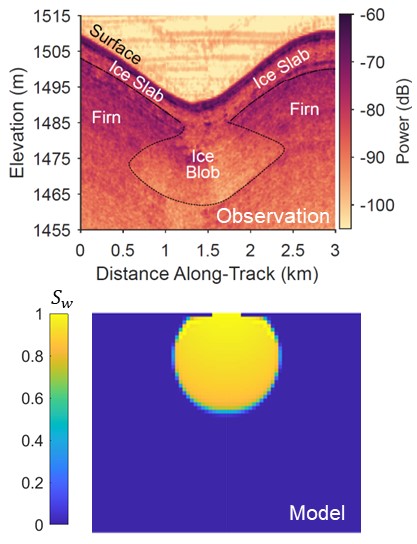
Ice-Sheet Hydrology
Over the last two decades, around 55% of mass loss from the Greenland Ice Sheet has come from the runoff of surface meltwater, with the remainder driven by ice dynamics. Observations and regional climate models also show a long-term increase in the area of the ice sheet experiencing surface melt, the maximum elevation of where melting occurs, and the total length of the annual melt season. Therefore, understanding how much and how quickly surface meltwater can be transported through the supraglacial and englacial hydrologic systems and how those systems are evolving with time is critical for assessing current and future sea level contributions from the Greenland Ice Sheet.
Recent Publications
-
 Vulnerability of Firn to Hydrofracture: Poromechanics Modeling
(Journal of Glaciology, 2024)
Vulnerability of Firn to Hydrofracture: Poromechanics Modeling
(Journal of Glaciology, 2024)
On the Greenland Ice Sheet, hydrofracture connects the supraglacial and subglacial hydrologic systems, coupling surface runoff dynamics and ice velocity. We use poromechanics to investigate whether water-filled crevasses in ice slabs can propagate vertically through an underlying porous firn layer. We find that the firn layer substantially reduces the system’s vulnerability to hydrofracture because much of the hydrostatic stress is accommodated by a change in pore pressure, rather than being transmitted to the solid skeleton.